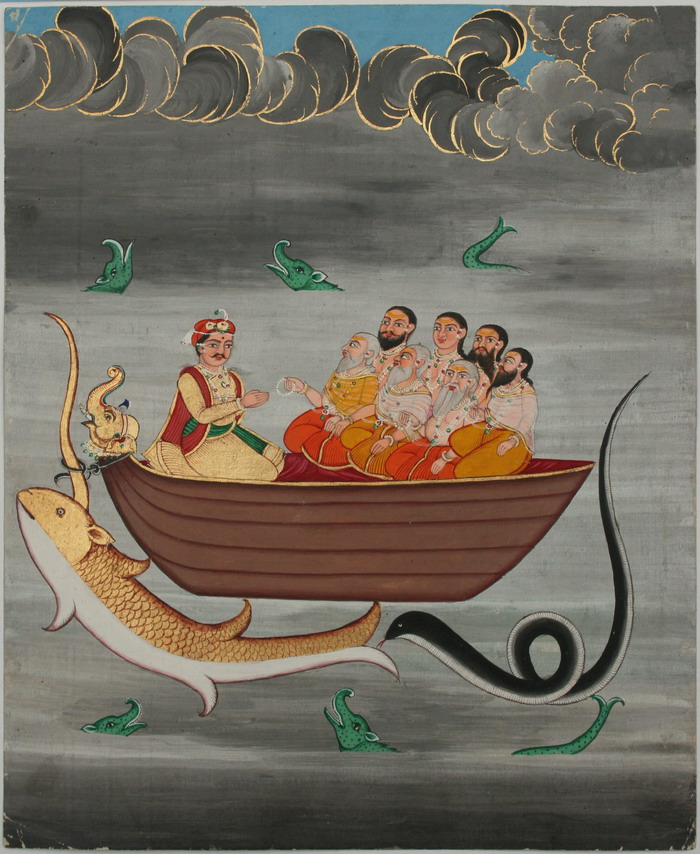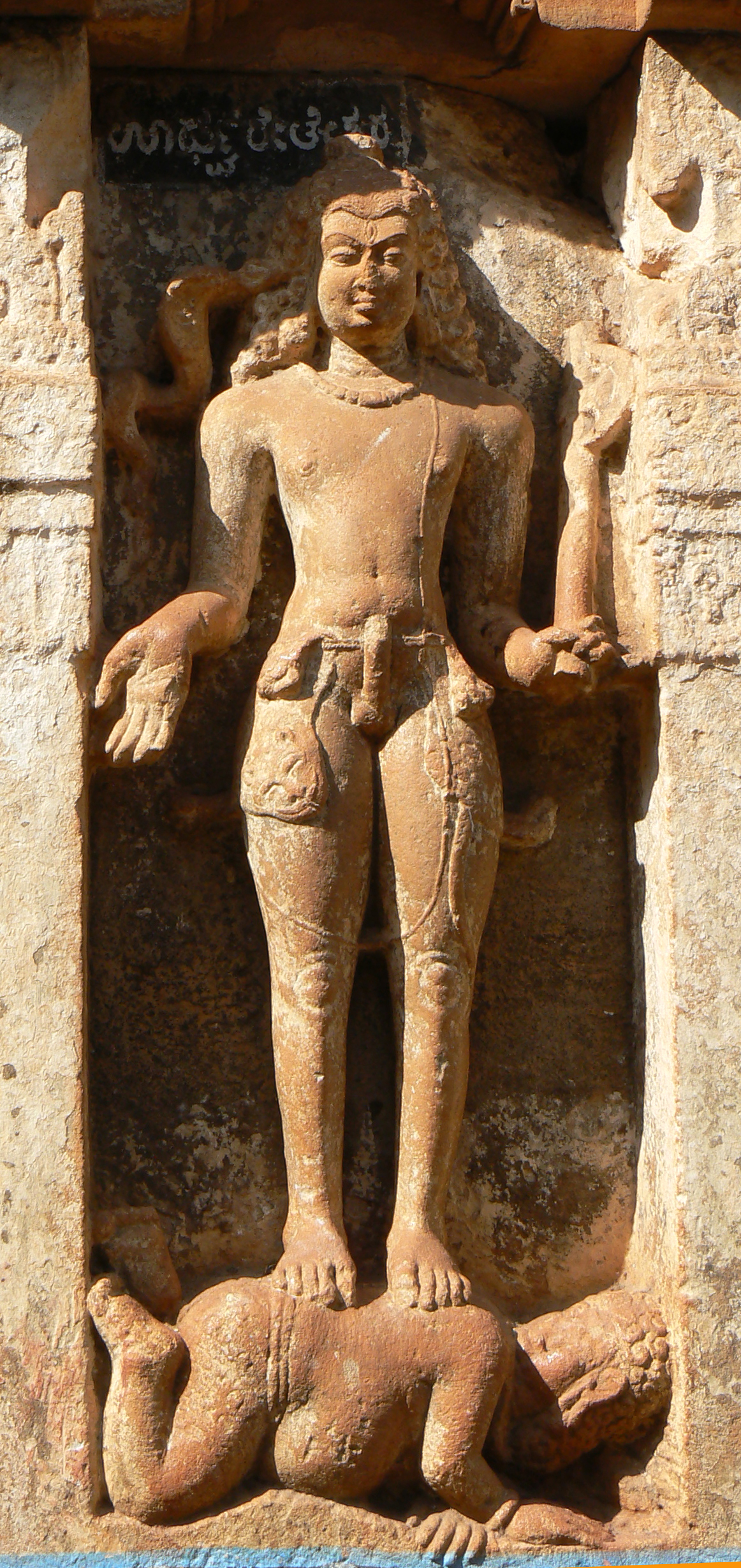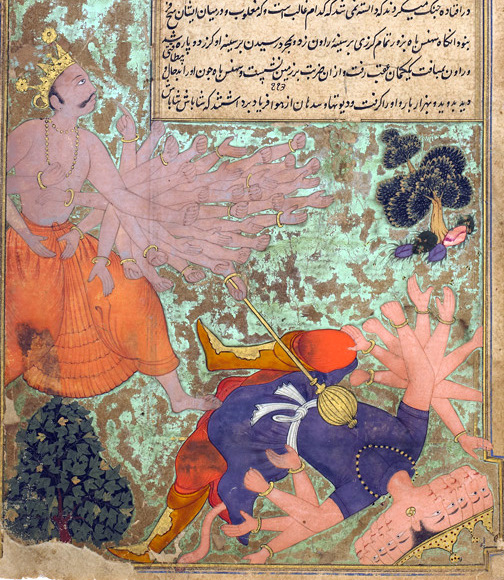|
Garg (gotra)
Garga was an ancient Indian sage who composed a Rigveda hymn. He is also known as Garga Bhāradvāja ("Garga, the descendant of Bharadvaja") to distinguish him from other people of same name. Ancestry Katyayana's '' Sarvanukramani'' attributes the Rig Veda hymn 6.47 to Garga. This text describes Garga as a son of Bharadvaja Barhaspatya. Katyayana was himself a descendant of Bharadvaja, but appears to have abridged the genealogy between Bharadvaja and Garga. The epic-Puranic literature suggests that Garga was a distant descendant of Bharadvaja. According to this tradition, Garga was a son of Bhumanyu and a great-grandson of Vidathin Bharadvaja (who was adopted by Bharata Daushyanti). Garga's brothers included Brhatkshatra, Mahavirya, and Nara. Descendants According to the epic-Puranic literature, Garga had a son named Shini (IAST: Śini), who was also a sage. Shini's descendants were called Shainyas. Several later ancient Indian scholars and legendary figures bore the na ... [...More Info...] [...Related Items...] OR: [Wikipedia] [Google] [Baidu] |
Rishi
''Rishi'' () is a term for an accomplished and enlightened person. They find mentions in various Vedic texts. Rishis are believed to have composed hymns of the Vedas. The Post-Vedic tradition of Hinduism regards the rishis as "great yogis" or "sages" who after intense meditation (tapas) realized the supreme truth and eternal knowledge, which they composed into hymns.Hartmut Scharfe (2002), Handbook of Oriental Studies, BRILL Academic, , pp. 13–15. The term appears in Pali literature as Ishi and in Buddhism, they can be either Buddhas, Paccekabuddhas, Arahats or a monk of high rank. Etymology According to Indian tradition, the word may be derived from two different meanings of the root 'rsh' (). Sanskrit grammarians derive this word from the second meaning: "to go, to move". V. S. Apte gives this particular meaning and derivation, and Monier-Williams also gives the same, with some qualification. Another form of this root means "to flow, to move near by flowing". (All the ... [...More Info...] [...Related Items...] OR: [Wikipedia] [Google] [Baidu] |
Vayu Purana
The ''Vayu Purana'' ( sa, वायुपुराण, ) is a Sanskrit text and one of the eighteen major Puranas of Hinduism. ''Vayu Purana'' is mentioned in the manuscripts of the Mahabharata and other Hindu texts, which has led scholars to propose that the text is among the oldest in the Puranic genre. Vayu and Vayaviya Puranas do share a very large overlap in their structure and contents, possibly because they once were the same, but with continuous revisions over the centuries, the original text became two different texts, and the Vayaviya text came also to be known as the ''Brahmanda Purana''. The ''Vayu Purana'', according to the tradition and verses in other Puranas, contains 24,000 verses (shlokas). However, the surviving manuscripts have about 12,000 verses. The text was continuously revised over the centuries, and its extant manuscripts are very different. Some manuscripts have four ''padas'' (parts) with 112 chapters, and some two ''khandas'' with 111 chapters. Compa ... [...More Info...] [...Related Items...] OR: [Wikipedia] [Google] [Baidu] |
Atharvaveda
The Atharva Veda (, ' from ' and ''veda'', meaning "knowledge") is the "knowledge storehouse of ''atharvāṇas'', the procedures for everyday life".Laurie Patton (2004), Veda and Upanishad, in ''The Hindu World'' (Editors: Sushil Mittal and Gene Thursby), Routledge, , page 38 The text is the fourth Veda, and is a late addition to the Vedic scriptures of Hinduism.Laurie Patton (1994), Authority, Anxiety, and Canon: ys in Vedic Interpretation, State University of New York Press, , page 57 The language of the Atharvaveda is different from Vedic Sanskrit, preserving pre-Vedic Indo-European archaisms. It is a collection of 730 hymns with about 6,000 mantras, divided into 20 books.Maurice BloomfieldThe Atharvaveda Harvard University Press, pages 1-2 About a sixth of the Atharvaveda texts adapts verses from the Rigveda, and except for Books 15 and 16, the text is mainly in verse deploying a diversity of Vedic meters. Two different recensions of the text – the and the – have sur ... [...More Info...] [...Related Items...] OR: [Wikipedia] [Google] [Baidu] |
Pashupata Shaivism
Pashupata Shaivism (, sa, पाशुपत) is the oldest of the major Shaivite Hindu schools. The mainstream which follows Vedic Pasupata penance are 'Maha Pasupatas' and the schism of 'Lakula Pasupata' of Lakulisa. There is a debate about pioneership of this schism and the Goan school of Nakulish darshan believes that Nakulish was pioneer and Lakulish and Patanjalinath were his disciples while Gujarat school believes that Nakulish and Lakulish are one. Sarvadarśanasaṅgraha written by Vidyaranya (sometimes also known as Madhavacharya) mentions it as "Nakulish Darshan" not as "Lakulish Darshan". Both sub schools are still active in their own areas. The philosophy of the Pashupata sect was systematized by also called Nakulīśa) in the 2nd century CE. The main texts of the school are '' '' with Kauṇḍinya's ', and ' with Bhāsarvajña's '. Both texts were discovered only in the twentieth century. Prior to that, the major source of information on this sect was a chapter d ... [...More Info...] [...Related Items...] OR: [Wikipedia] [Google] [Baidu] |
Lakulisha
Lakulisha ( sa, लकुलीश ) (Etymology: लगुड (staff) or लकुट (mace) + ईश (lord) = meaning, the lord with a staff or mace or club or stick) was a prominent Shaivite revivalist, reformist and preceptor of the doctrine of the Pashupatas, one of the oldest sects of Shaivism. According to some scholars, Lakulisha is the founder of the Pashupata sect. While, another section argues that the Pashupata doctrine was already in existence before Lakulisha, and he was only its first formal preceptor. According to a tradition stated in the '' Linga Purana'', Lakulisha is considered as the 28th and the last avatar of Shiva and the propounder of Yoga system. According to the same tradition, Lakulisha had four disciples, viz., Kaurushya, Garga, Mitra and Kushika. According to another tradition mentioned in the ''Avanti Khanda'' of the ''Skanda Purana'', Lakulisha and his four disciples while passing Mahakalavana, installed a linga at that place, which was then kno ... [...More Info...] [...Related Items...] OR: [Wikipedia] [Google] [Baidu] |
Kaushika
Vishvamitra ( sa, विश्वामित्र, ) is one of the most venerated rishis or sages of ancient India. According to Hindu tradition, he is stated to have written most of the Mandala 3 of the Rigveda, including the Gayatri Mantra. The Puranas mention that only 24 rishis since antiquity have understood the whole meaning of —and thus wielded the whole power of — the Gayatri Mantra. Vishvamitra is supposed to have been the first, and Yajnavalkya the last. Before renouncing his kingdom and royal status, Brahmarishi Vishvamitra was a king, and thus he retained the title of Rajarshi, or 'royal sage'. Textual background Historically, Viśvāmitra Gāthina was a Rigvedic rishi who was the chief author of Mandala 3 of the Rigveda. Viśvāmitra was taught by Jamadagni Bhārgava. He was the purohita of the Bharata tribal king Sudās, until he was replaced by Vasiṣṭha. He aided the Bharatas in crossing the Vipāś and Śutudrī rivers (modern Beas and Sutlej). ... [...More Info...] [...Related Items...] OR: [Wikipedia] [Google] [Baidu] |
Matsya Purana
The ''Matsya Purana'' (IAST: Matsya Purāṇa) is one of the eighteen major Puranas (Mahapurana), and among the oldest and better preserved in the Puranic genre of Sanskrit literature in Hinduism. The text is a Vaishnavism text named after the half-human and half-fish avatar of Vishnu. However, the text has been called by the 19th-century Sanskrit scholar Horace Hayman Wilson, "although a Shaivism (Shiva-related) work, it is not exclusively so"; the text has also been referred to one that simultaneously praises various Hindu gods and goddesses. The ''Matsya Purana'' has survived into the modern era in many versions, varying in the details but almost all of the published versions have 291 chapters, except the Tamil language version, written in Grantha script, which has 172 chapters. The text is notable for providing one of earliest known definition of a Purana genre of literature. A history written with five characteristics is called a Purana, states ''Matsya Purana'', otherwise ... [...More Info...] [...Related Items...] OR: [Wikipedia] [Google] [Baidu] |
Vrddha Garga
Garga, also known as Vṛddha Garga ("Garga the Elder"), was an ancient Indian scholar of jyotisha. Several Sanskrit-language jyotiḥśāstra works - covering topics such as astrology, astronomy, and divination - are attributed to him. These works were written over several centuries, and are obviously not the work of a single author. Modern scholars generally date the oldest of these works - ''Gargiya-jyotisha'' - to the 1st century CE, although the source materials for these works may be much older. Biography Garga is also called Vṛddha-Garga ("Garga the Elder") to distinguish him from his later namesakes. He is among the earliest and the most important authors in the jyotisha tradition. '' Mahabharata'' 9.36.14-17 describes him as a prominent astrologer who lived at Gargasrota on the banks of the Sarasvati River. '' Vishnu Purana'' 2.5.26 states that the mythical serpent Shesha was pleased with Garga and taught him astrology, and thus, Garga became capable of predicting ... [...More Info...] [...Related Items...] OR: [Wikipedia] [Google] [Baidu] |
Kartavirya Arjuna
Kartavirya Arjuna ( sa, कार्तवीर्य अर्जुन, ; also known as Sahasrabahu Arjuna or Sahasrarjuna) was a king of an ancient Haihayas kingdom with capital at Mahishmati which is on the banks of Narmada River in the current state of Madhya Pradesh. Kartavirya was son of Kritavirya, king of the Haihayas. According to the Puranas, Haihaya was the grandson of Sahasrajit, son of Yadu. This is his patronymic, by which he is best known; he is also referred to simply as Arjuna. He is described as having a thousand hands and a great devotee of god Dattatreya. One of the several such accounts states that Arjuna conquered Mahishmati city from Karkotaka Naga, a Naga chief and made it his fortress-capital.Pargiter, F.E. (1972) 922 ''Ancient Indian Historical Tradition'', Delhi: Motilal Banarsidass, p.265-7 Almost 100 manuscripts on the worship of Kārtavīrya have been found mostly in the royal libraries of the Hindu Rajas. The states in which the manuscri ... [...More Info...] [...Related Items...] OR: [Wikipedia] [Google] [Baidu] |
Markandeya Purana
The ''Markandeya Purana'' ( sa, मार्कण्डेय पुराण; IAST: ) is a Sanskrit text of Hinduism, and one of the eighteen major Puranas. The text's title Markandeya refers to a sage in Hindu History, who is the central character in two legends, one linked to Shiva and other to Vishnu. The Markandeya text is one of the Puranas that lacks a sectarian presentation of ideas in favor of any particular god, and it is rare to read any deity being invoked or deity prayers in the entire text. The Markandeya Purana is probably one of the oldest in Purana genre of Hindu Literature, among the most interesting and important, states Ludo Rocher. It is famous for including the Devi Mahatmya within it, the oldest known treatise on Devi (Goddess) as the Supreme Truth and Creator Of The Universe. The text is considered as a central text of the Hindu Goddess-related Shaktism tradition, with an extraordinary expression of reverence for the feminine. The Markandeya Purana's Dev ... [...More Info...] [...Related Items...] OR: [Wikipedia] [Google] [Baidu] |
Kalayavana
Kalayavana ( sa, कालयवन, lit=Death Greek, translit=Kālayavana) is a king in Hinduism. He is stated to have invaded Mathura with an army of 30 million ''yavanas'' (barbarians) against Krishna. Legend The ''Brahmanda Purana'' 14.46ff narrates the following story of Kalayavana's birth: a woman named Vrka-devi decided to test the virility of Gargya (IAST: Gārgya, "descendent of Garga"). Gargya was unable to ejaculate, for which the Yadavas insulted him. After a 12-year penance, Gargya got a boon from Mahadeva that he would get a son who would destroy the Yadavas. During his penance, he ate iron fillings that made his complexion iron-black (''kāla''). Subsequently, Gargya came to Mathura, and had sex with a cowherd's daughter (''gopi''), who was actually an apsara in disguise. Kalayavana was the result of this union: Garga crowned him as the new king, and left for the forest. According to the Vishnu Purana and Harivamsa, Kalayavana was a Yavana king. He was the par ... [...More Info...] [...Related Items...] OR: [Wikipedia] [Google] [Baidu] |
Brahmanda Purana
The ''Brahmanda Purana'' ( sa, ब्रह्माण्ड पुराण, ) is a Sanskrit text and one of the eighteen major Puranas, a genre of Hindu texts. It is listed as the eighteenth Maha-Purana in almost all the anthologies. The text is also referred in medieval Indian literature as the Vayaviya Purana or Vayaviya Brahmanda, and it may have been same as the Vayu Purana before these texts developed into two overlapping compositions. The text is named after one of the cosmological theories of Hinduism, namely the "Cosmic Egg" ( Brahma-Anda). It is among the oldest Puranas, the earliest core of text maybe from 4 century CE, continuously edited thereafter over time and it exist in numerous versions. The Brahmanda Purana manuscripts are encyclopedic in their coverage, covering topics such as Cosmogony, Sanskara (Rite Of Passage), Genealogy, Chapters On Ethics And Duties (Dharma), Yoga, Geography, Rivers, Good Government, Administration, Diplomacy, Trade, Festivals, A Trave ... [...More Info...] [...Related Items...] OR: [Wikipedia] [Google] [Baidu] |





